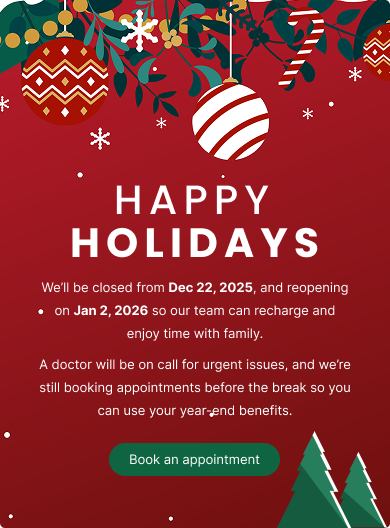What Is Gynaecomastia?
Gynaecomastia (también escrito gynecomastia) is the medical term for the enlargement of male breast tissue. It’s usually caused by hormonal imbalances—specifically an increase in estrogen or a decrease in testosterone. It’s not uncommon, especially during puberty, aging, or as a side effect of certain medications.
Men might first notice puffy nipples, breast tenderness, or a slight swelling beneath the areola. These changes can lead to concerns, both physical and emotional. But how do you know if it’s gynaecomastia or something more serious, like male breast cancer?
Gynaecomastia vs Male Breast Cancer: What’s the Difference?
While gynaecomastia is benign, male breast cancer, although rare, is a serious condition. Knowing how to tell the difference is essential.
Key Differences:
Gynaecomastia tends to affect both sides (though not always equally) and feels soft or rubbery.
Male breast cancer often presents as a hard, painless lump on one side.
If you feel a firm lump, especially near the nipple, or notice nipple retraction or changes in skin texture, it’s crucial to get checked.
What Does an Inverted Nipple Look Like?
An inverted nipple may pull inward instead of pointing outward. While some people are born with this, a sudden nipple retraction—especially if it’s only on one side—can be a symptom of inverted nipple breast cancer.
Other signs include:
Pictures of inverted nipples due to breast cancer often show puckered or sunken nipples
Redness or dimpling of the skin
Discharge from the nipple
If you’re searching “why are my nipples flat” or noticing changes, especially along with a lump, it’s time to consult a doctor.
Puffy Nipples and Male Appearance
Many men ask, “Why are my nipples puffy?” or “How do I get rid of puffy nipples without surgery?”
Puffy nipples in men are often linked to gynaecomastia, but they can also be caused by:
Body fat distribution
Hormonal imbalance
Genetics
Searches like:
How to get rid of puffy nipples
Men with big nipples
How to get rid of man nipple
…reflect a common desire to address this condition without surgery. Fortunately, in mild cases, lifestyle changes can help.
Foods That May Contribute to Gynaecomastia
There’s growing interest in how diet affects hormone levels. Some suspect certain foods may increase estrogen activity in the body, contributing to gynaecomastia or puffy breast nipples.
Foods That May Worsen Gynaecomastia:
Soy products (in large amounts – due to phytoestrogens)
Dairy with added hormones
Ultra-processed foods
Alcohol (especially beer)
Searches like “foods that cause man breasts” or “what foods cause gyno” reflect a growing awareness of this connection.
Foods to Help Reduce Gynaecomastia
While diet alone may not reverse the condition entirely, some foods can support hormonal balance.
Foods That May Help:
Cruciferous vegetables (like broccoli, kale, cauliflower)
Foods high in zinc (pumpkin seeds, chickpeas)
Healthy fats (avocado, nuts, olive oil)
Lean protein and fiber-rich foods
People often explore a diet to reduce gynecomastia or look up gynecomastia reduction food as a natural way to manage their symptoms.
Hormones and Nipple Size
Some men wonder if testosterone makes your nipples bigger. In general, healthy testosterone levels support lean muscle and reduce fat, which can improve the appearance of the chest. However, hormonal therapy without medical supervision can backfire, leading to further imbalance.
Questions like:
Does testosterone make your nipples bigger?
Do puffy nipples cause fat?
Why are my nipples fat?
…often relate more to body composition and hormonal health than isolated breast tissue alone.
Can Male Breast Cancer Develop in Stages?
Yes. Just like in women, male breast cancer can be staged depending on tumor size and spread. A Stage 1 male breast cancer lump is typically small and hasn’t spread to lymph nodes. Early detection greatly improves the prognosis.
If you’re wondering whether a small lump is gynaecomastia or a tumor, a physical exam, mammogram, or ultrasound can help differentiate them.
When to See a Doctor
If you notice:
A new lump
One-sided swelling
Nipple inversion or discharge
Changes in the skin or areola
…it’s important to seek medical attention. Early detection is key for both breast cancer and ruling out more serious causes of gynaecomastia.
Final Thoughts
Gynaecomastia is common and usually benign, but it’s important not to ignore changes in the chest area—especially if they’re new or one-sided. Whether you’re managing puffy nipples, adjusting your diet to reduce gynecomastia, or concerned about inverted nipple symptoms, staying informed and seeking medical advice when needed can give you clarity and peace of mind.




